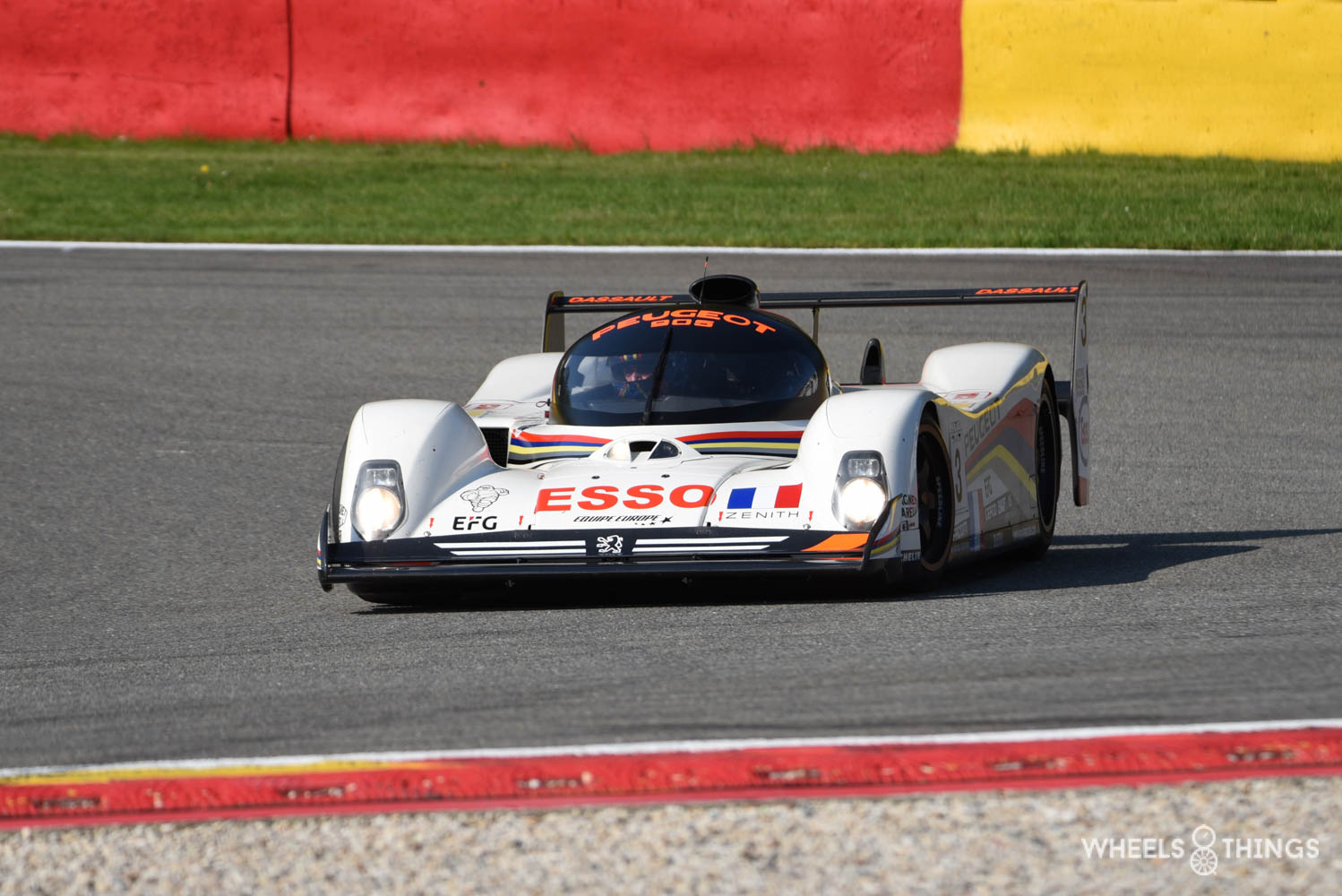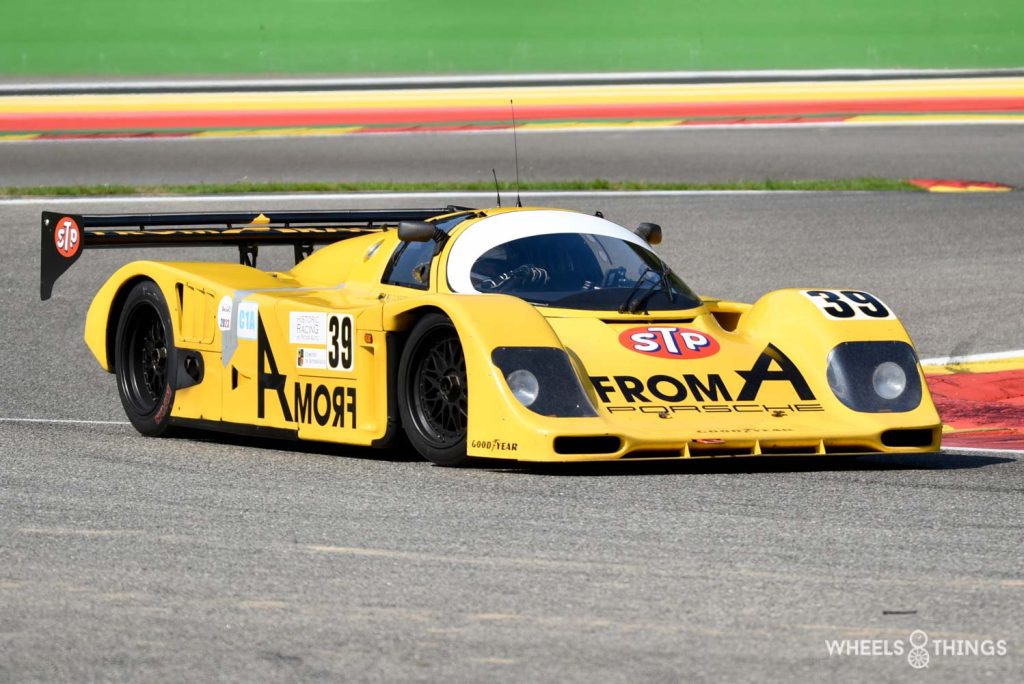
That there was a party in Le Mans this year on the occasion of their 100th anniversary you had long since gathered after our report from Rétromobile. Not read it? You can find all the info on that here.
We are currently in “24 Hours of Le Mans” mode and one series that contributed greatly to the myth are the Group C cars from the period between 1982 and 1993.
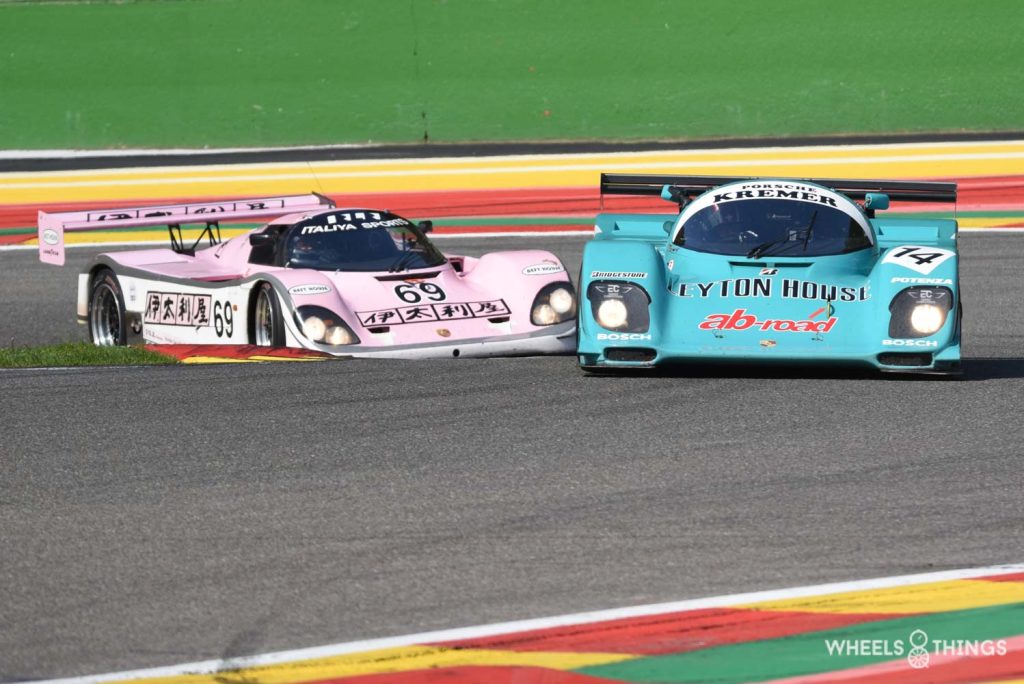
It started in 1982 with Porsche’s dominance that would last until 1987. Then came Tom Walkinshaw, with his TWR Jaguars, winning twice ( 1988 and 1990 ). In 1989, victory was Sauber-Mercedes’ and two years later they were also on their way to winning until their V8 engine broke. Mazda, against all odds, became the first Japanese manufacturer to take a seat on the top step of the podium of the 1991 edition. The Group C period ended with a double for Peugeot in 1992 and 1993. At the end of 93, unfortunately, due to lack of interest from constructors, a line was drawn under this top period in endurance racing.
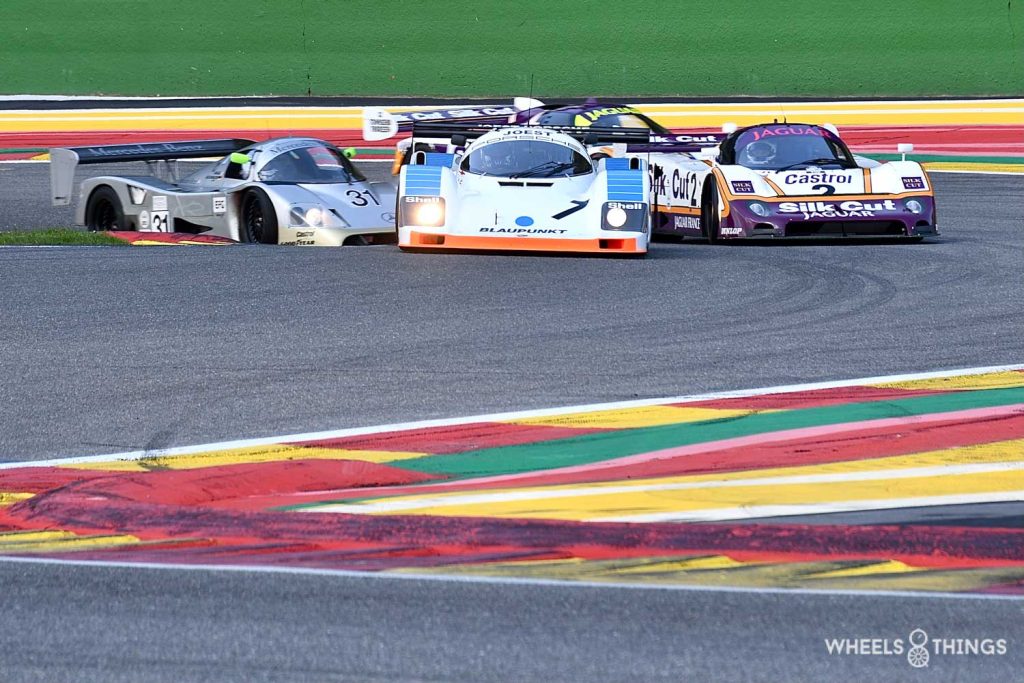
Fortunately, we can relive these beautiful moments in the historic Group C championship organised by Peter Auto. Unfortunately, since 2019, we had to note that the starting fields got a bit smaller every year. Obviously, it is not really easy and cheap to put these monsters in competition. Nevertheless, we were very happy after seeing the Group C entry list for Spa-Classic. After several weaker years, there were still around 35 cars on it, which was more than double compared to last year’s race. We go over the best ones.
SAUBER MERCEDES
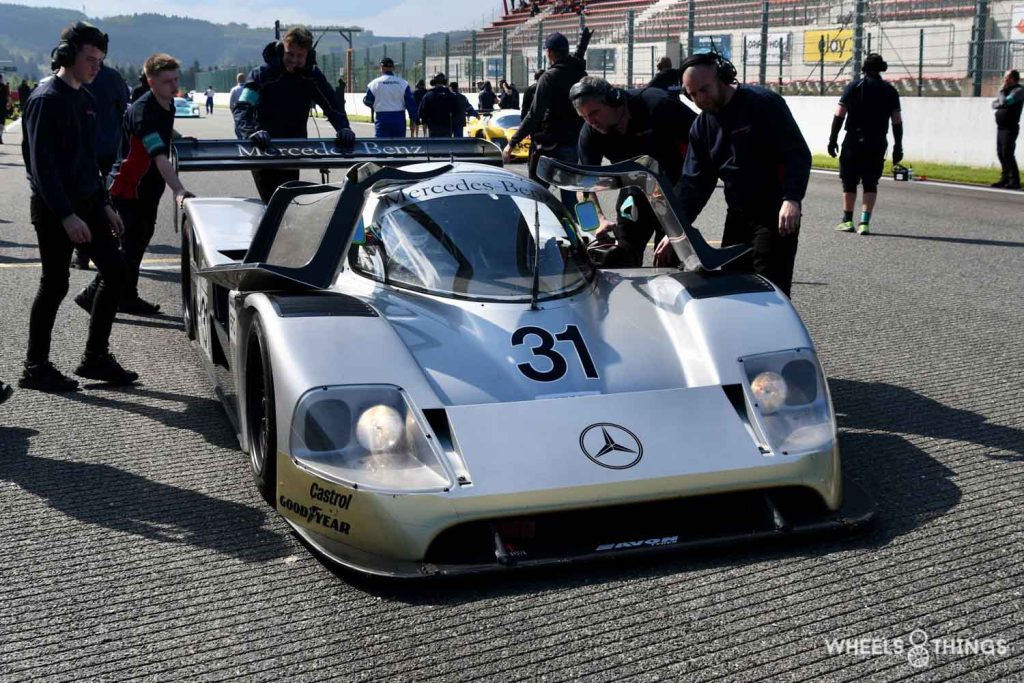
We saw some new entrants and several returners we hadn’t seen for a while anyway like this ex Michael Schumacher Sauber Mercedes C11. Was it perhaps to do with preparation for the Le Mans Classic centenary edition? Could certainly be because these Group Cs are running in the preliminary programme.
PORSCHE
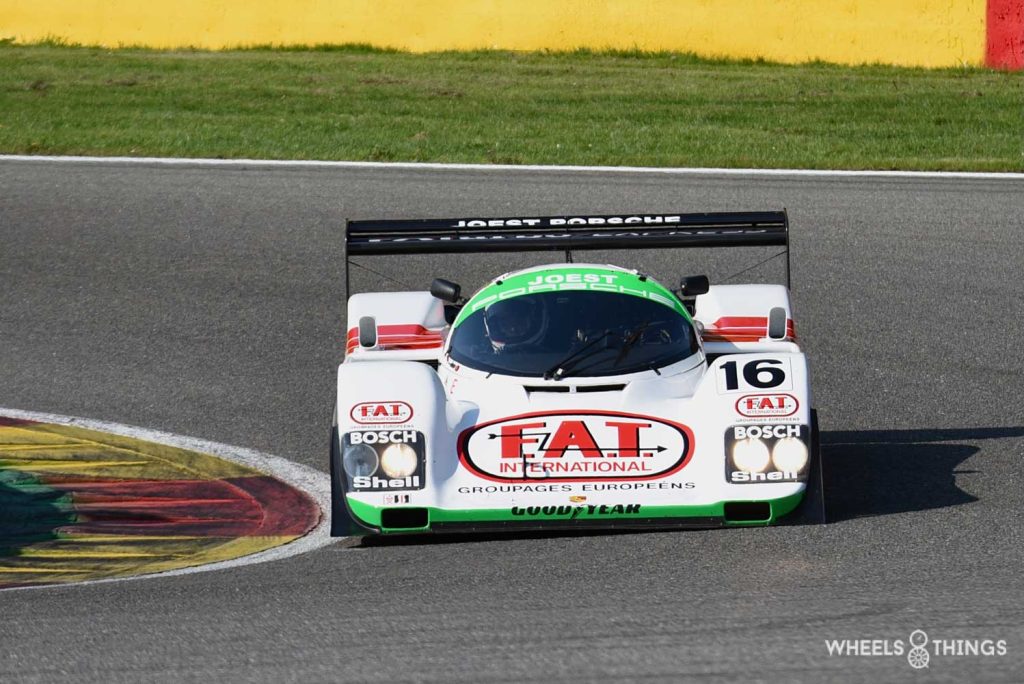
Most of the participating cars came from Porsche and Jaguar. Porsche provided a dominant Group C car in the early years of the series with the 956 and 962. It all started with the 956 in 1982. The first Le Mans entry saw only Rothmans Porsche drivers on the podium. Competition from Ford, Nimrod, Rondeau, March and Lancia immediately knew what time it was. All but Lancia left the fray. From 1983, Porsche then supplied customer cars to private teams who often came to compete with the factory cars.
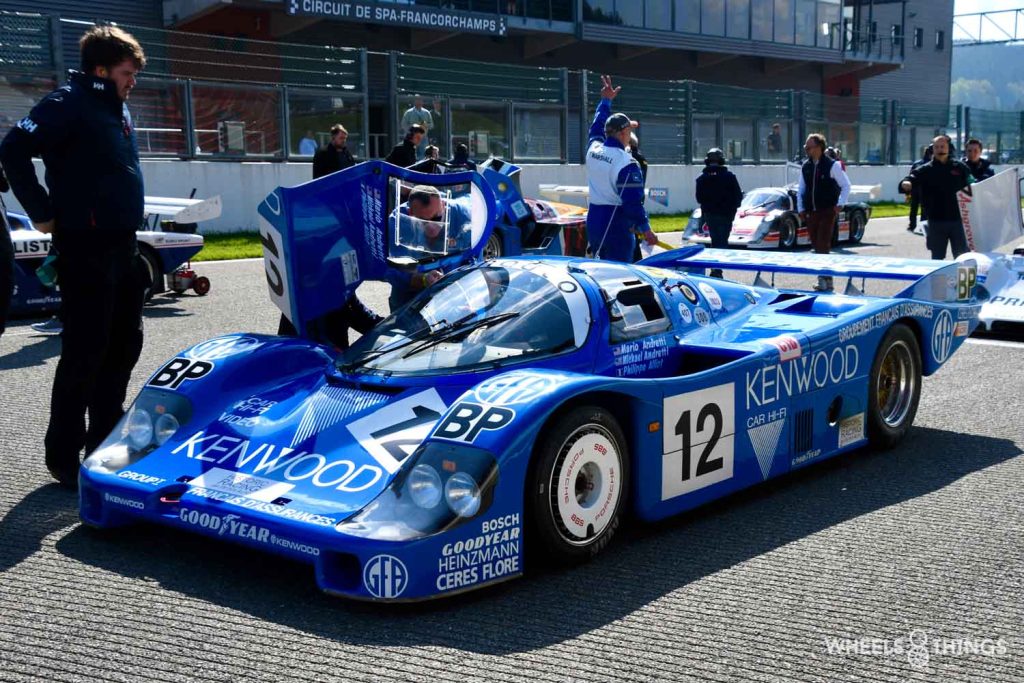
One of these private cars is this 1983 Kremer Kenwood 956 LH. It is the only 956 in the starting field and also the only one fitted with a “Lang Heck or LH”. LH here means an extended and more aerodynamic bonnet that was specially developed for the long straight at Le Mans.
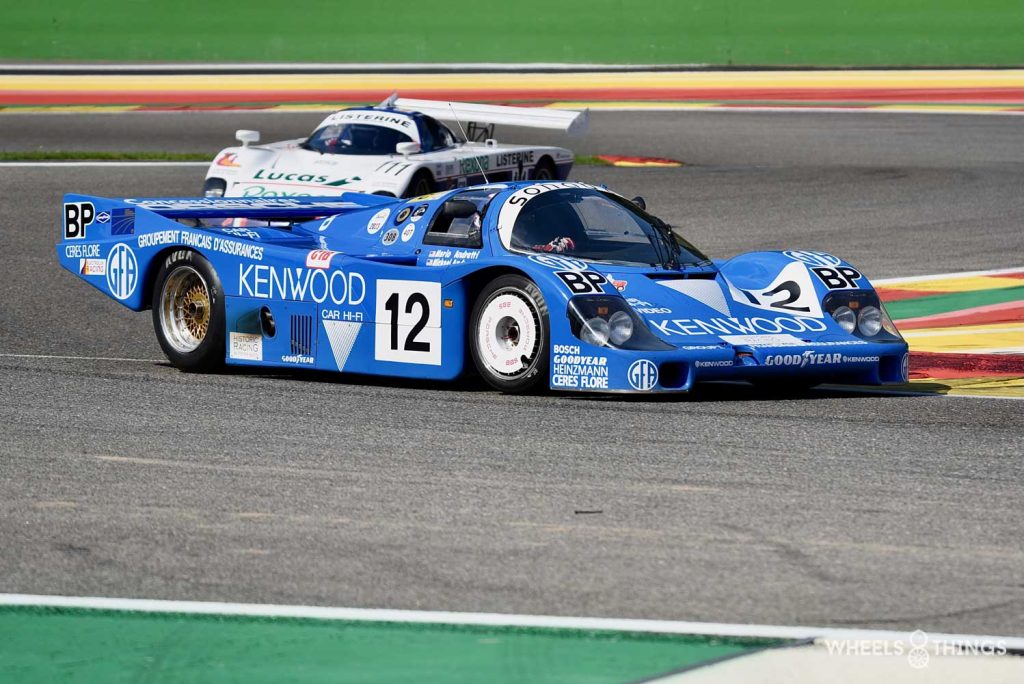
In 1983, father and son Mario and Michael Andretti take place in this Kremer Porsche. They are assisted by Philippe Alliot and together they drive to a fine third place in the standings.
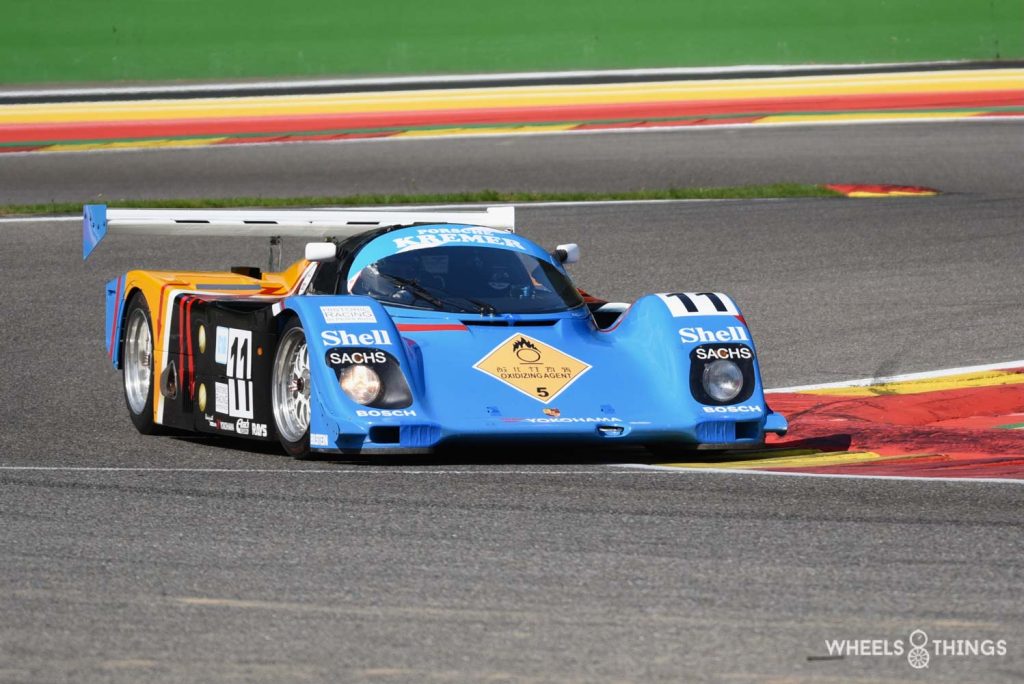
Kremer was present not only with this Kenwood but also a 1990 962 C and a 1989 962 CK6 Leyton House.
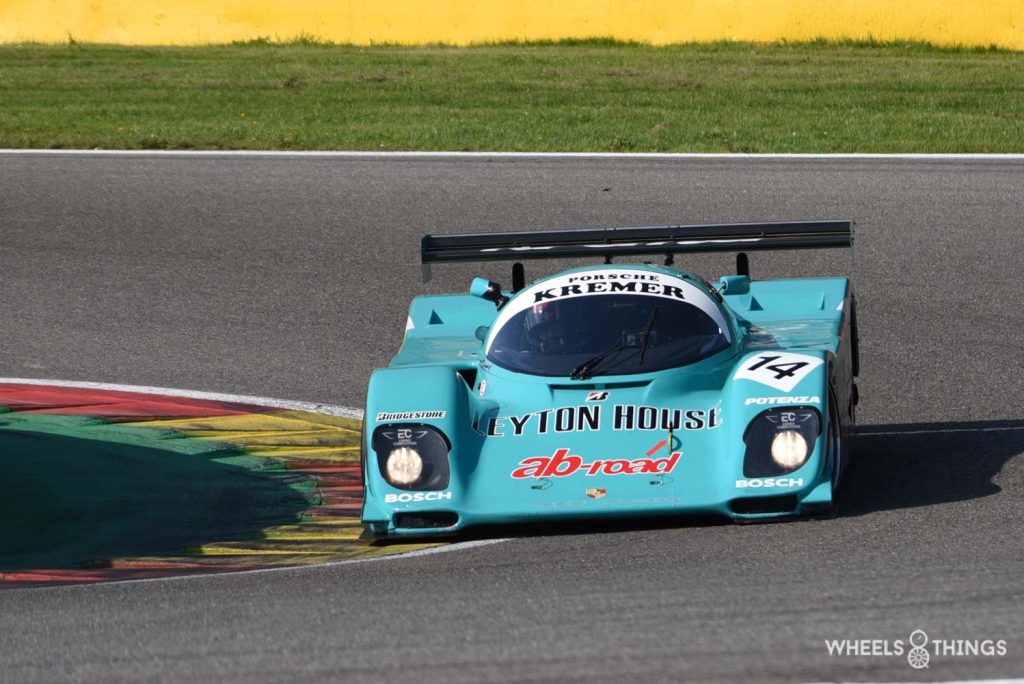
This CK6 is a modified version from Kremer based on the Porsche 962.
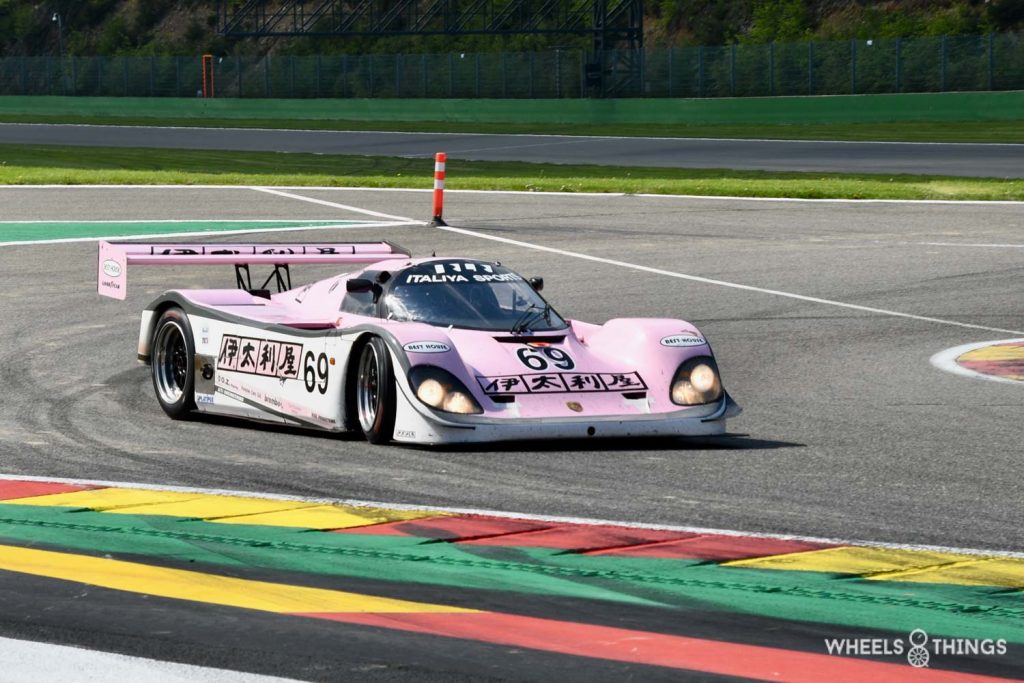
From Richard Loyd’s stable, there was this pink 1990 Japanese 962 C.
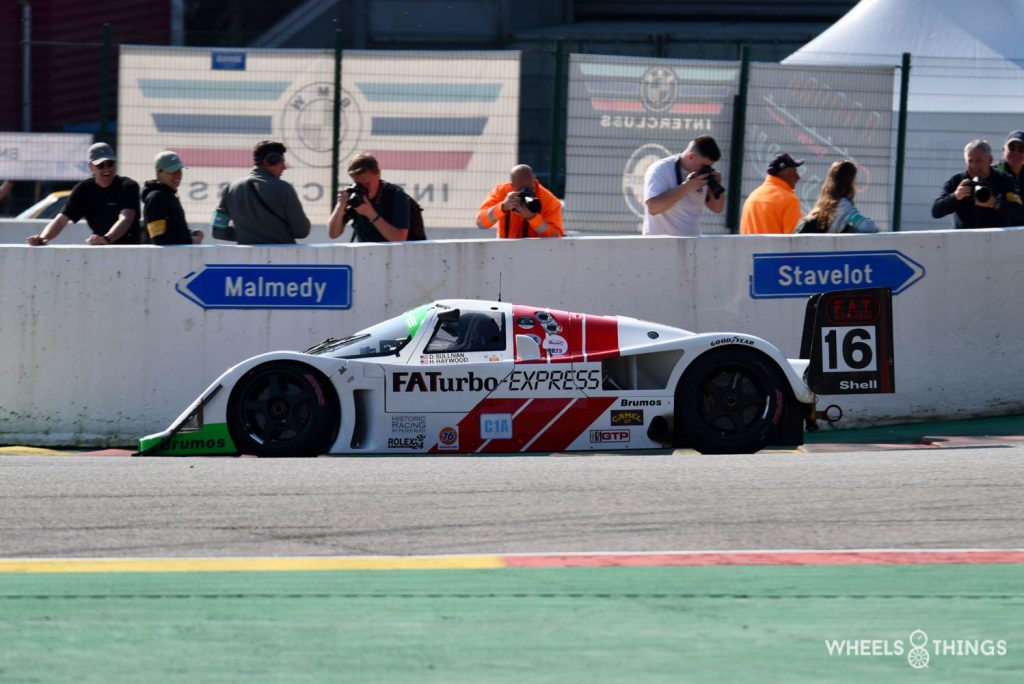
From the last years of the 962, we also found two Joest examples. A Fat/Brumos IMSA version from 1989.
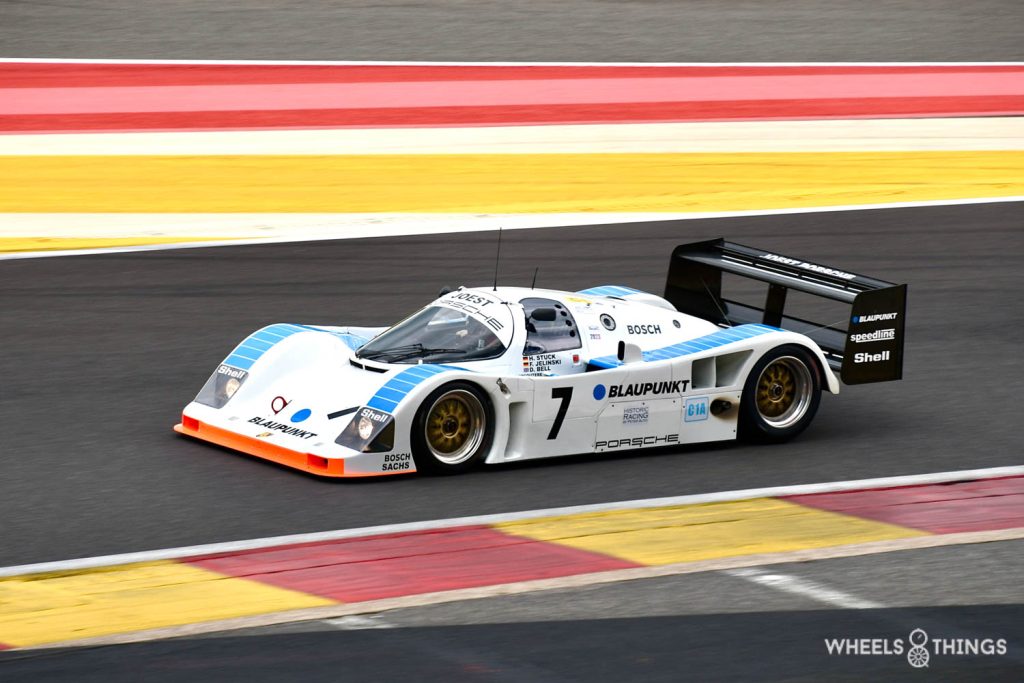
And a Blaupunkt model from the WC.
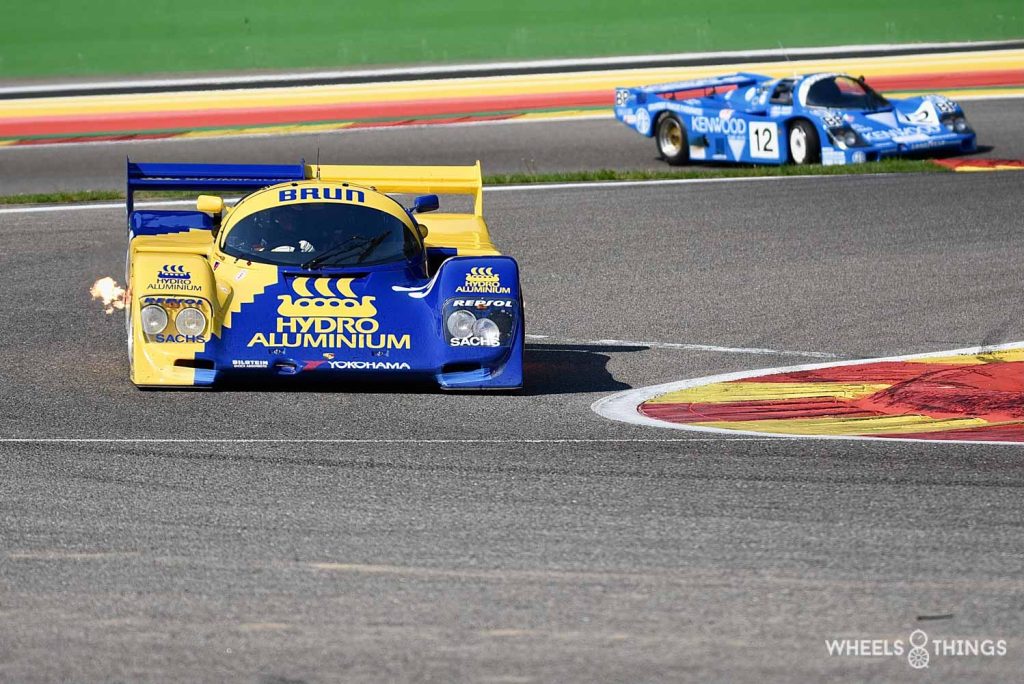
From Joest competitor Brun then came this Hydro Aluminium yellow/blue 962C.
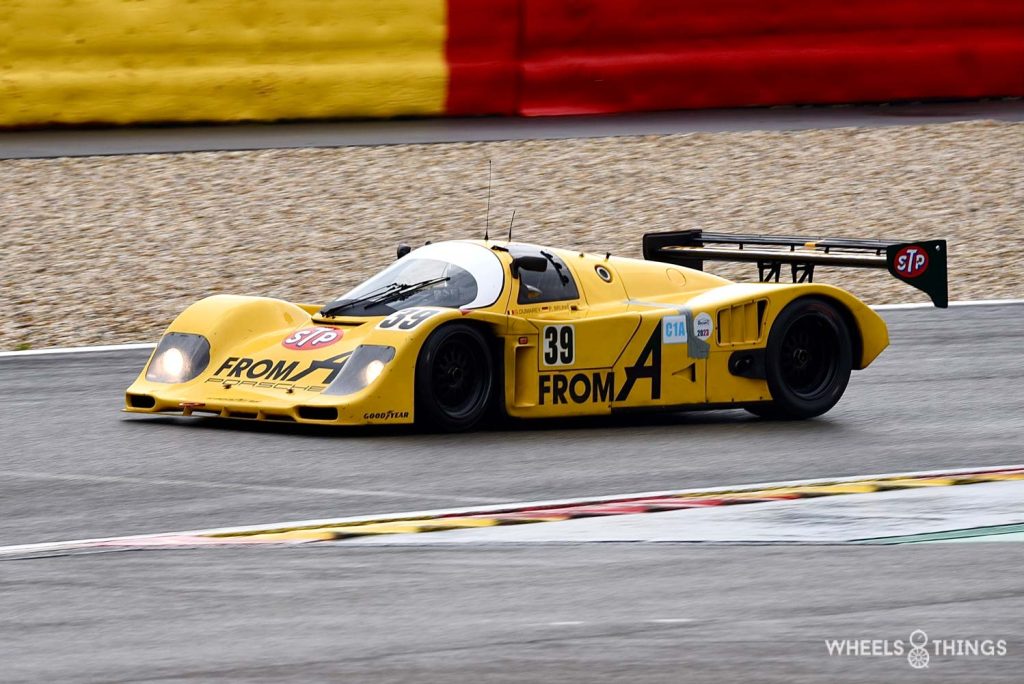
But also a Porsche entrant from the “Far East” with this From A Porsche 962 C from the 1990 Japanese championship.
BRUN
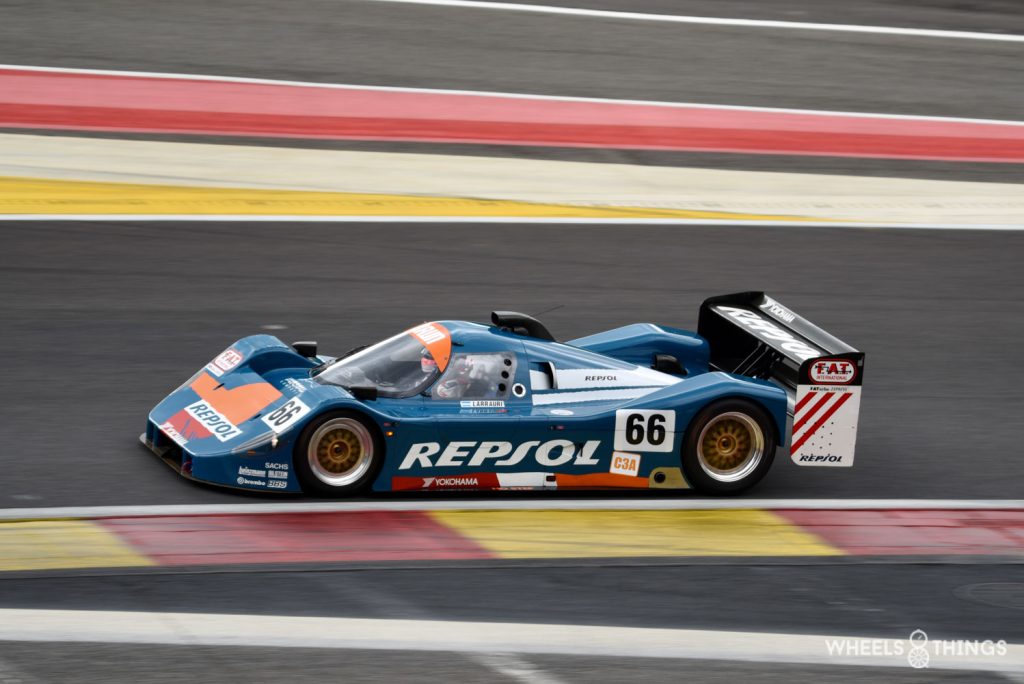
After his Porsche period, Walter Brun’s team built its own Group C car named C 91. A carbon monocoque was fitted with an older Judd V8 engine with 3.5-litre capacity. This C 91 was not exactly a success. Four races were contested with it and four times there was a abandonment. This rather nice Brun Group C was recently fully restored and appeared at Spa Classic on Friday for qualifying.
TWR JAGUAR
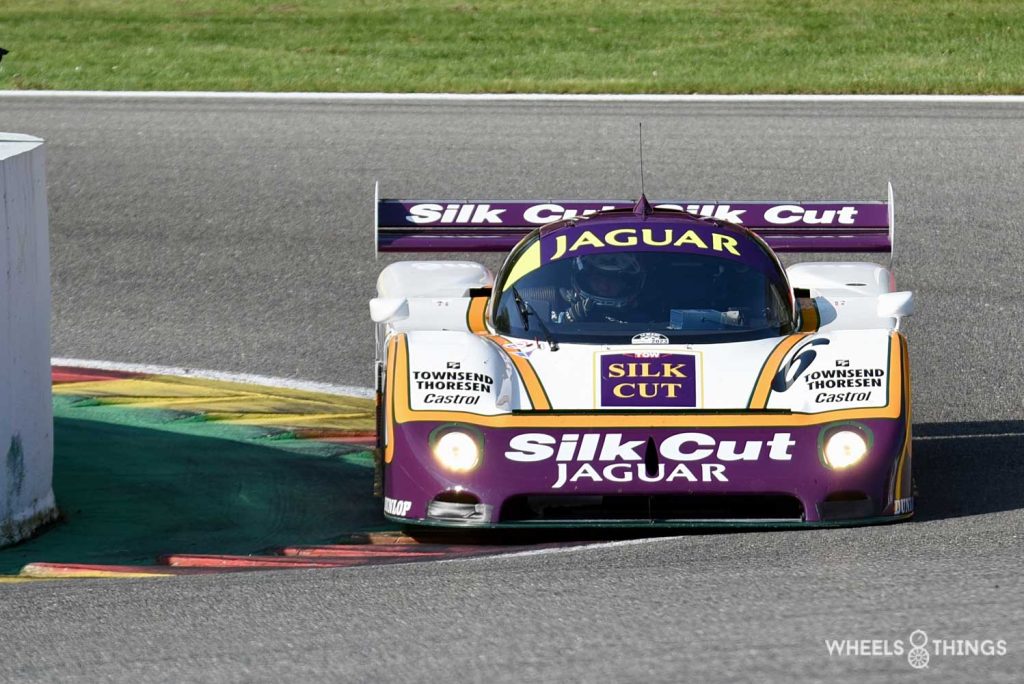
At Jaguar, we found five stunning examples. Four of them in the legendary Silk Cut version with one XJR8 and three XJR9 versions. You can find more info about these Jaguars here.
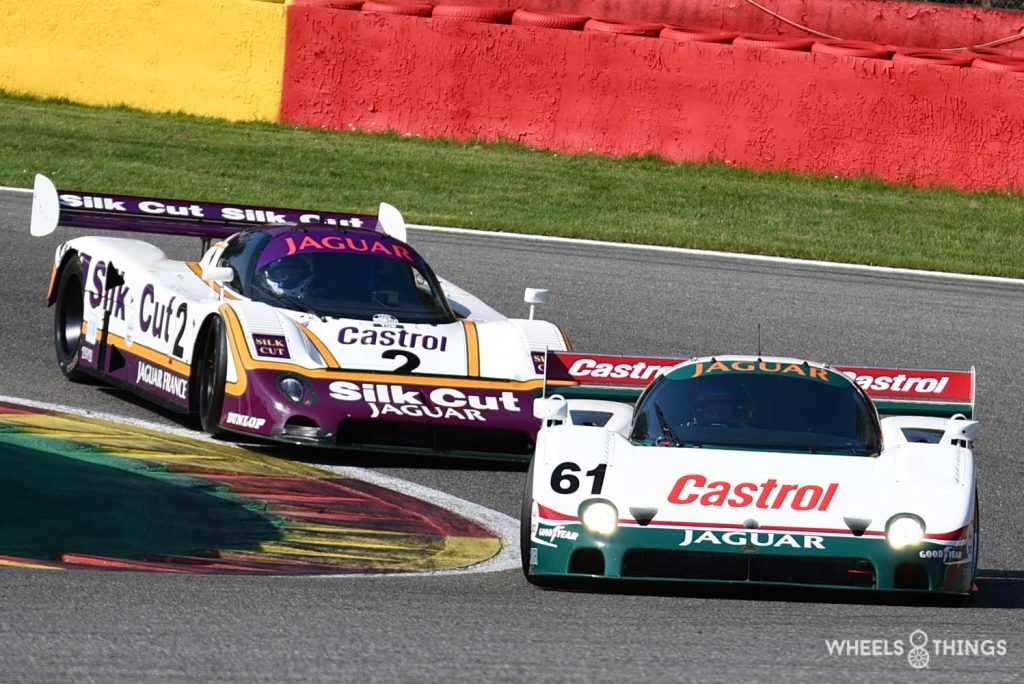
In quoted article, the XJR 11 also comes up. At Spa Classic, we saw for the first time an IMSA XJR 10 Castrol version, the American counterpart of the XJR 11. It was also the first time we saw a Jaguar in Castrol trim at Spa. The big difference is in the engine used. Instead of a traditional V12, this one is fitted with a V6 turbo.
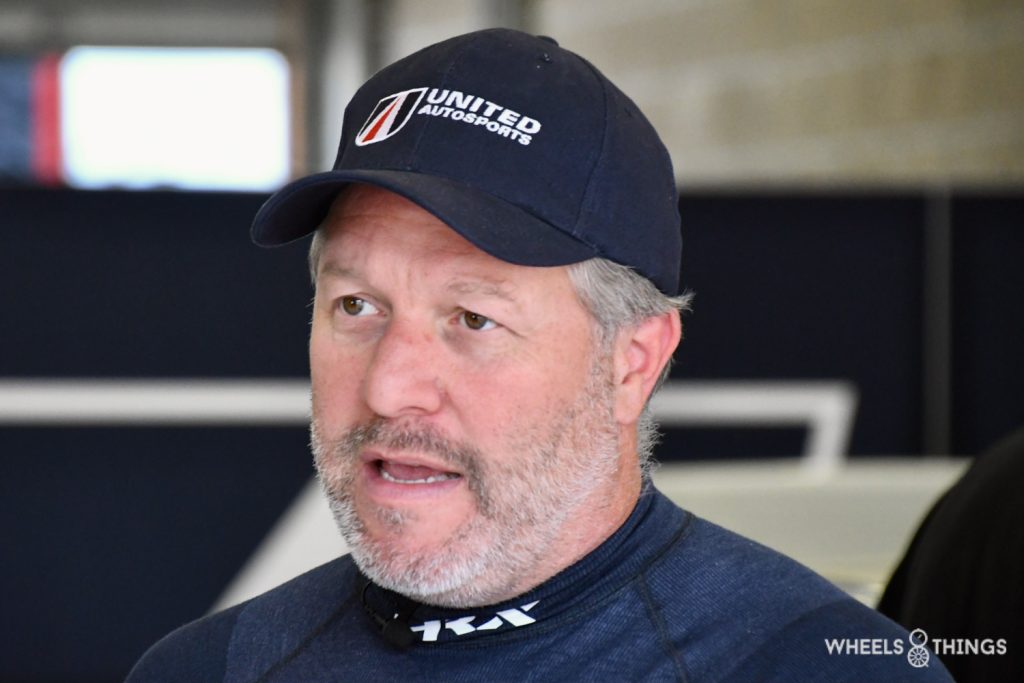
Besides the specific Castrol design, this XJR 10 had another surprise: at the wheel was one Zak Brown, the CEO of Mclaren. This Jaguar belongs to Zak’s collection. A free F1 weekend gave him the opportunity to take part in Spa Classic.
ASTON MARTIN
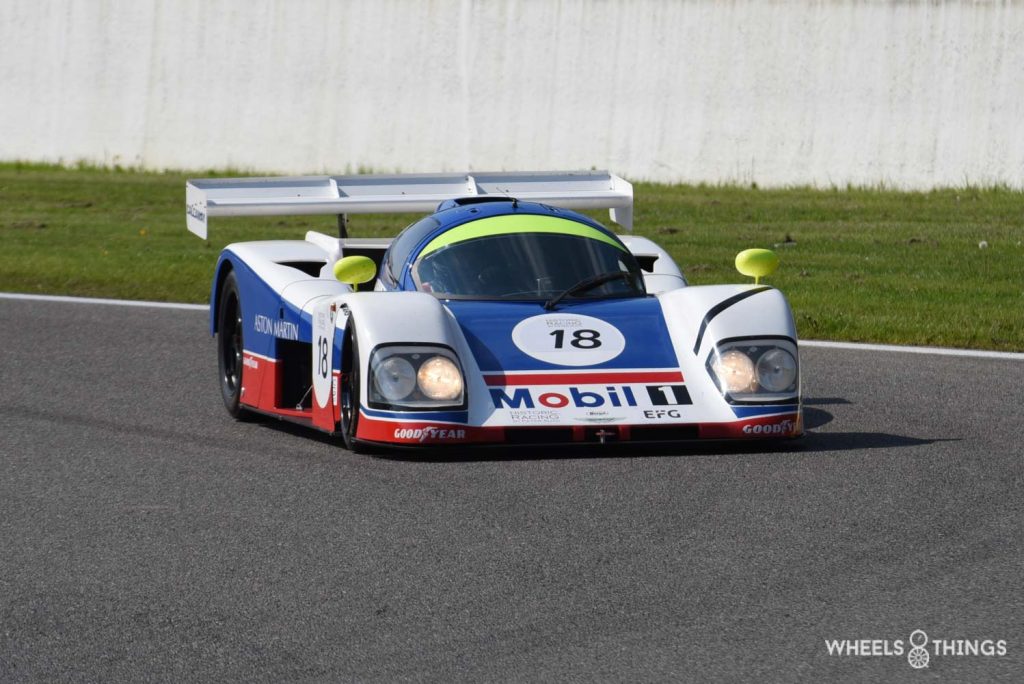
Another fun appearance with the 1989 Aston Martin AMR 1. One of the four ever built participated in Spa Classic. For the 1989 season, Aston Martin decided to enter the World Championship in partnership with Ray Mallock and Ecurie Ecosse. The AMR 1 was designed for this purpose and fitted with a V8 5.3-litre engine sourced from the Aston Martin Virage. It will not be a success story. The Aston cannot make a fist against Porsche, Jaguar and Sauber Mercedes. An eleventh place in Le Mans is only possible through regularity because the AMR 1 is not fast enough and this is still the case today. But it is a unique car.
At the end of the year, therefore, the plug will be pulled on the programme.
NISSAN
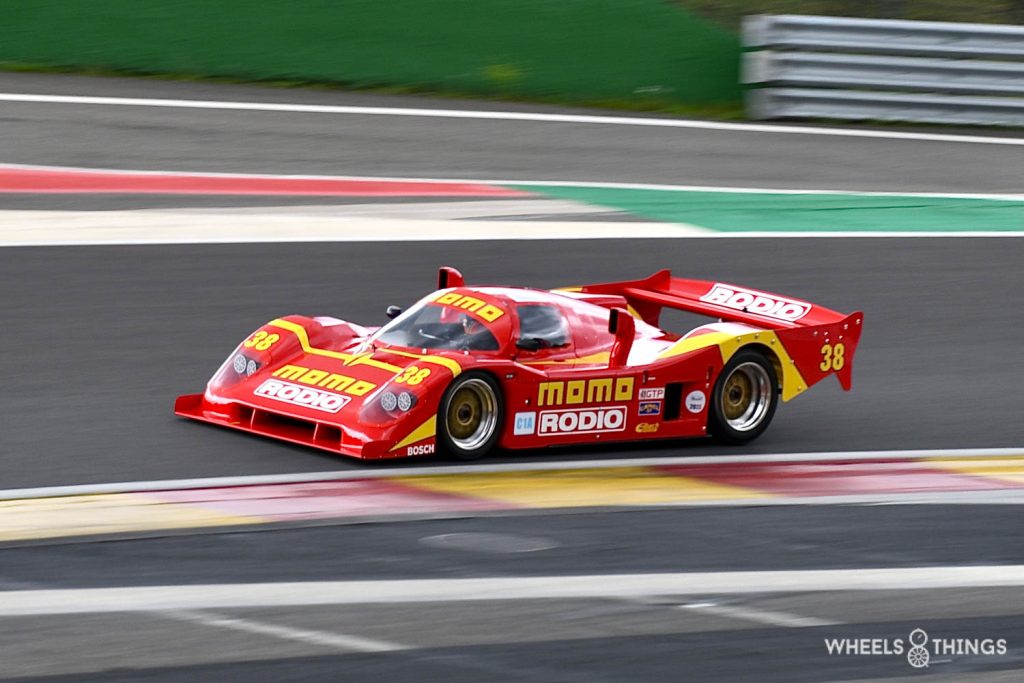
On Friday, we also saw a 1991 IMSA Momo Nissan NPT 90. It still appeared on Saturday morning for qualifying but we did not see it again for the races. There is clearly still some work to be done on this Nissan.
PEUGEOT EN LOLA V10
From the last years of the Group C championship, we also found two “noisemakers” with a V10 atmospheric engine.
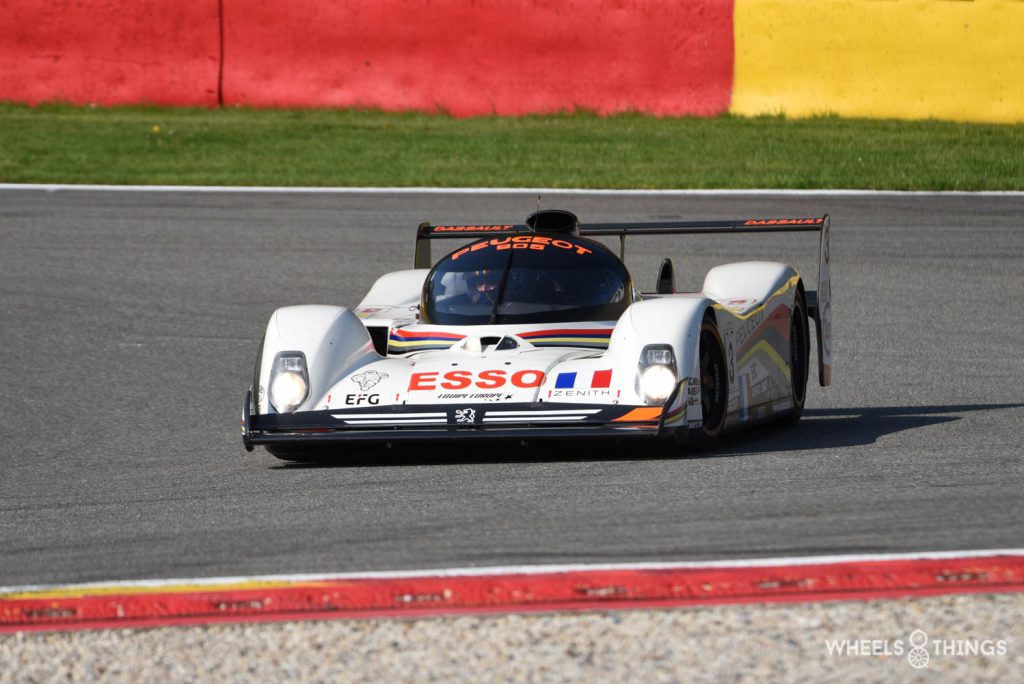
Again, we only saw the 1992 Peugeot 905 Evo 1 driving around on Fridays but what a sound!
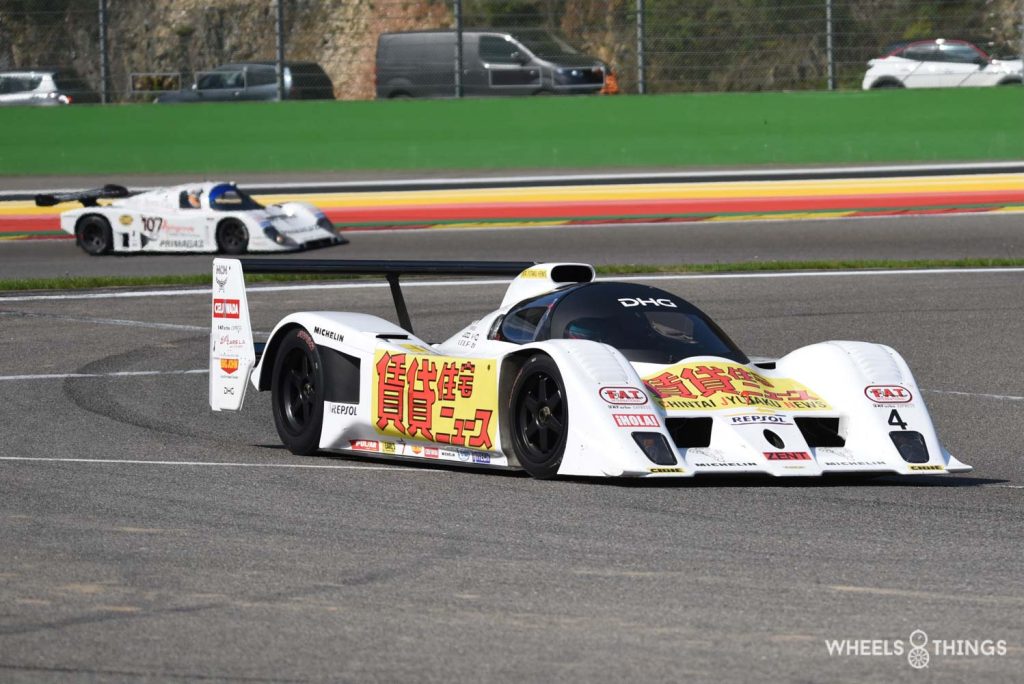
This includes the 1992 Lola T92/10 fitted with a Judd V10. Many motorsport fans today still think wistfully back to the days of Formula 1 and their V10 engines that revved 17/18 to 19,000. Some of these engines were also used in the last Group C cars such as the Peugeot V10 engine.
As it is still the case today with LMP2, a smaller category also existed in the Group C period. This C2 series was mainly for the smaller private teams.
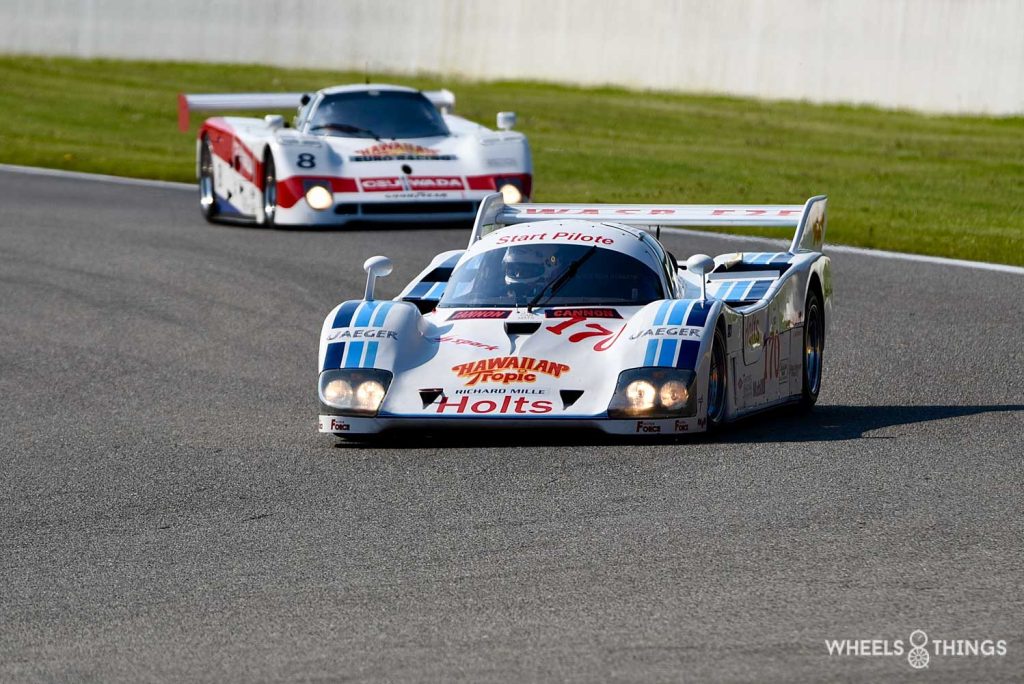
Therefore, with slightly smaller cars and atmospheric engines, driving costs were a lot lower than in the big class.
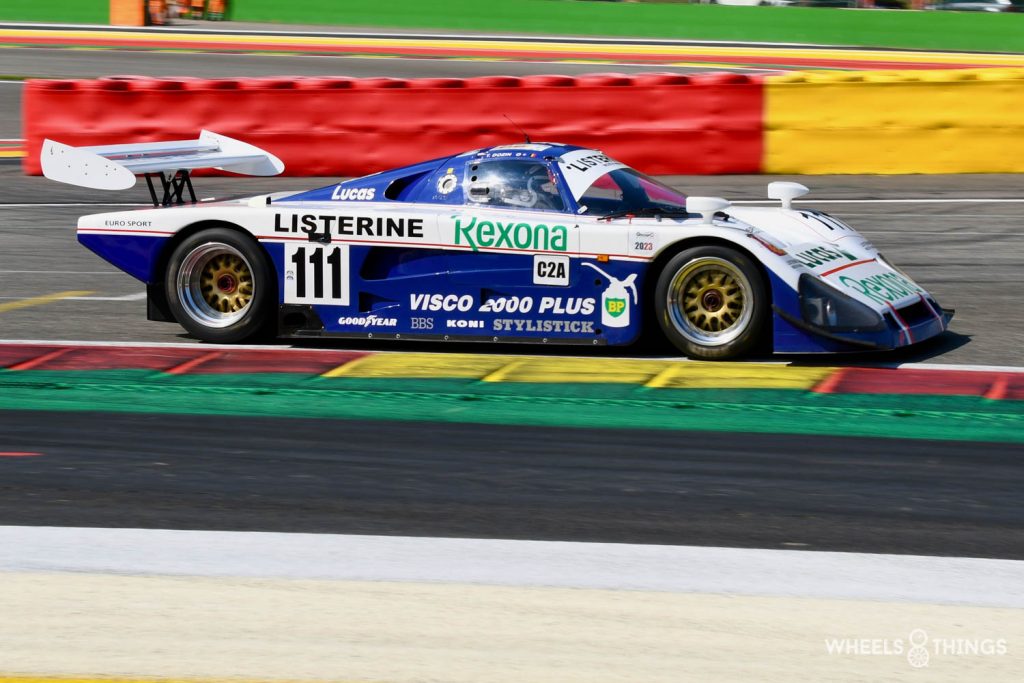
The most common brands in C2 were Spice and Tiga. Both were also present with several at Spa-Classic.
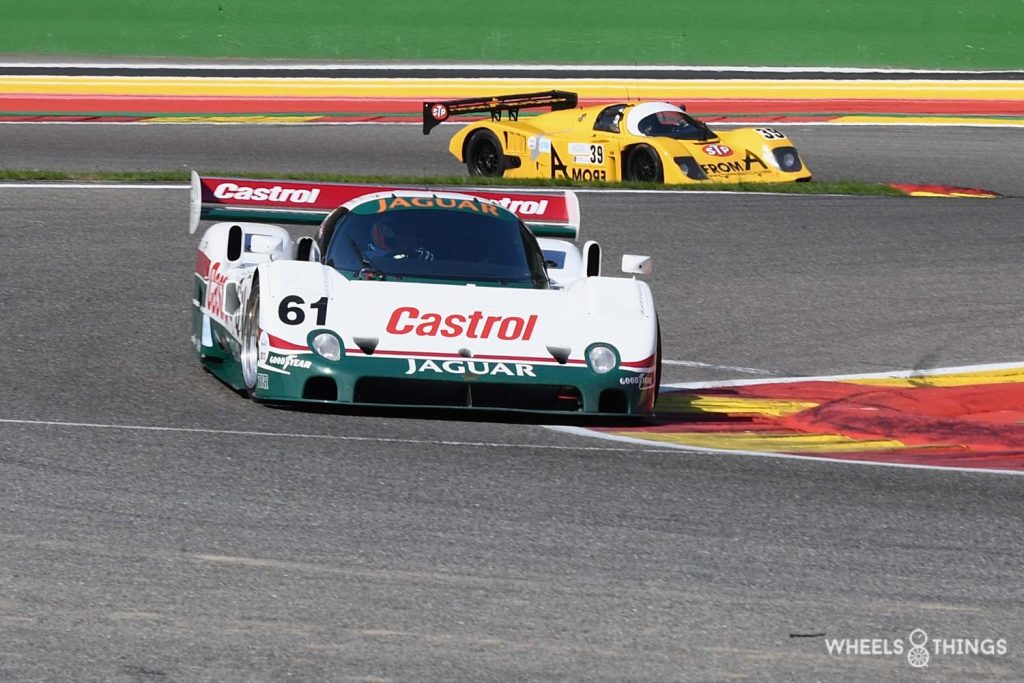
All this beauty appeared on the track on Friday for the qualifying runs. And as it is often the case with classic races, that’s when most of the cars are driving around. Notwithstanding a superb sixth qualifying time, we won’t see the newly restored Brunn C91 again later.
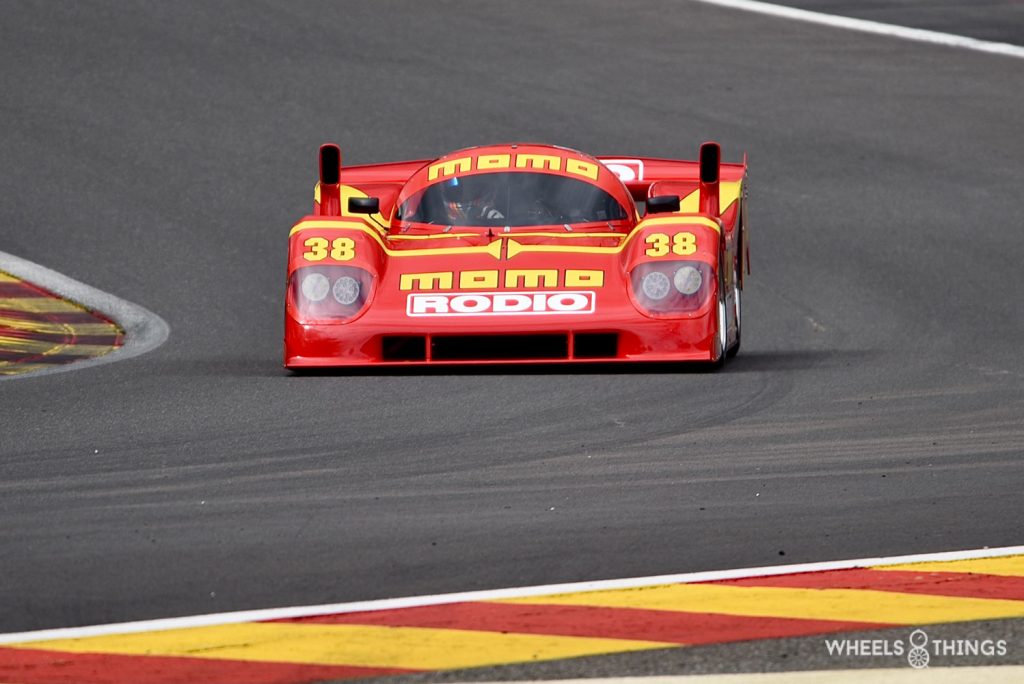
The Momo Nissan NPT 90 was also clearly not on point yet, doing more than half a minute more over a lap of Spa than the fastest. The red Nissan will not take part in the races either.
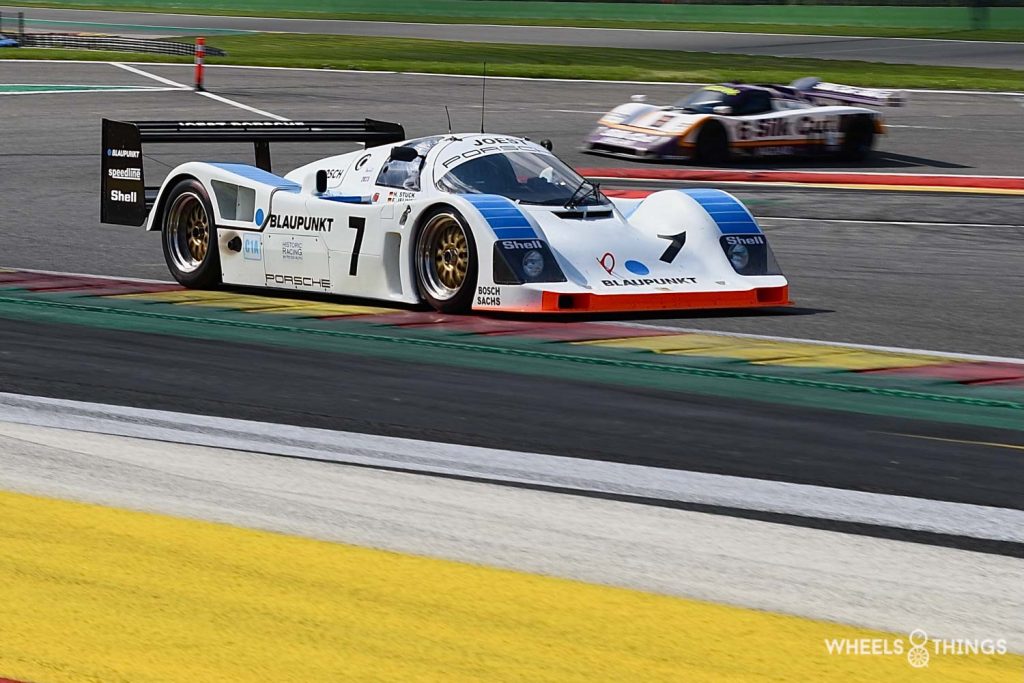
The Blaupunt Joest Porsche is overwhelmingly the fastest of the bunch, driving even 5 seconds faster than the Sauber Mercedes C11 which can just stay ahead of the TWR Silk Cut Jaguar XJR 9. Now really none of that really matters. The main thing is to see these beautiful cars driving around.
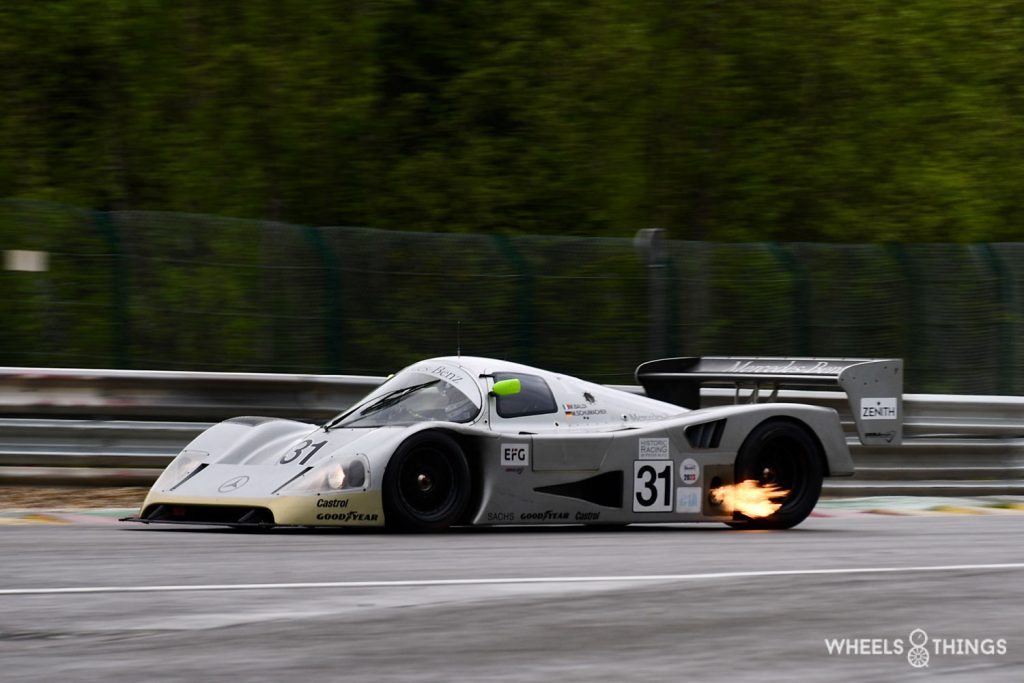
But some pilots don’t care much about that when we see that the Mercedes C11 nevertheless reaches a top speed, on the Kemmel straight, of just under 270 km per hour and is thus still 12 km faster than the second Jaguar XJR 9. The fastest C2 reaches a top of 213 km per hour.
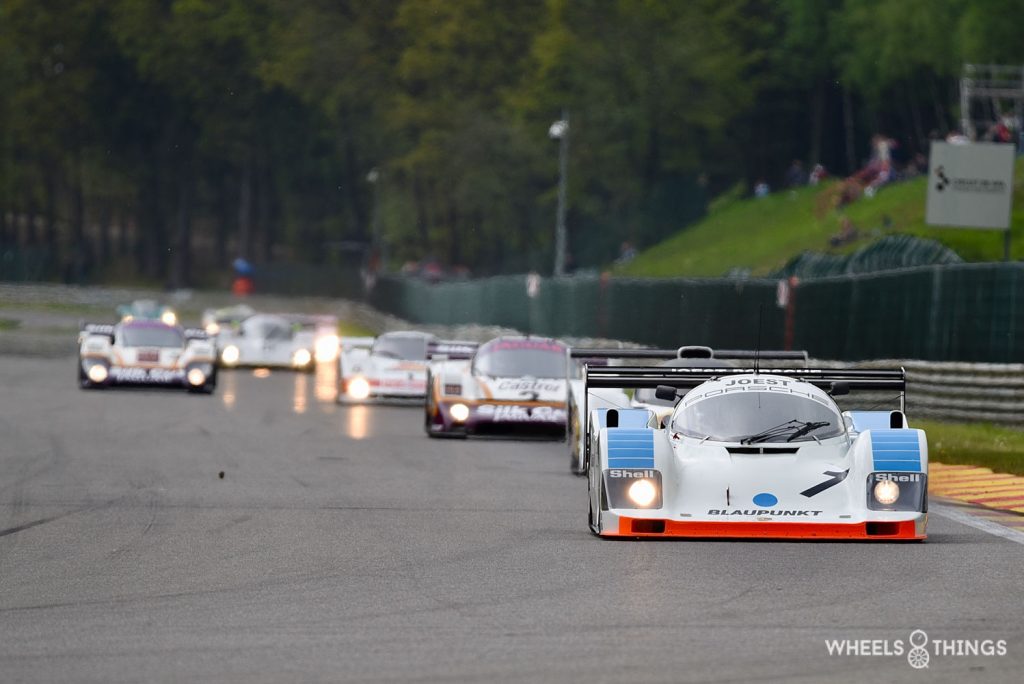
The first race was run on Saturday afternoon and after a completely sunny day, it started drizzling on the warm-up lap. This was followed by a heavy downpour after the start, giving us an exciting and beautiful race. Ralf Kelleners ( Blaupunkt Porsche ) who had started from pole and David Hart ( Lola T92/10 ) soon entered the pits for rain tyres. Other brave drivers then stayed back on track and hoped for better conditions. Of course, on a big circuit like Francorchamps, it is not equally wet on every section either. It is quite possible that there are some drier sections in addition to the wet ones. And that was clearly noticeable in the lap times. The differences between the cars on rain or dry tyres were not very big.
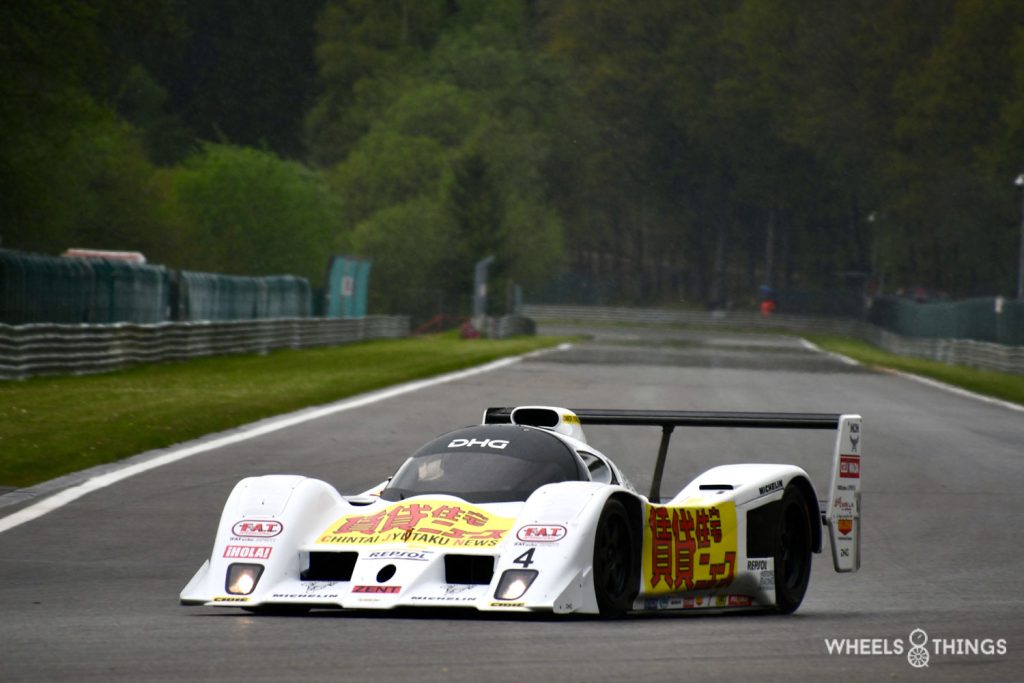
These two begin a catch-up race and it is mainly Hart who drives his atmospheric Lola around five seconds faster than the competition. He works his way all the way to the front but has to retire four laps before the end after a brake manoeuvre gone wrong in the bus stop. The Blaupunkt Porsche is less comfortable in these conditions and only gets as far as fourth position.
Meanwhile, we lost Zak Brown’s Jaguar due to a loose bonnet.
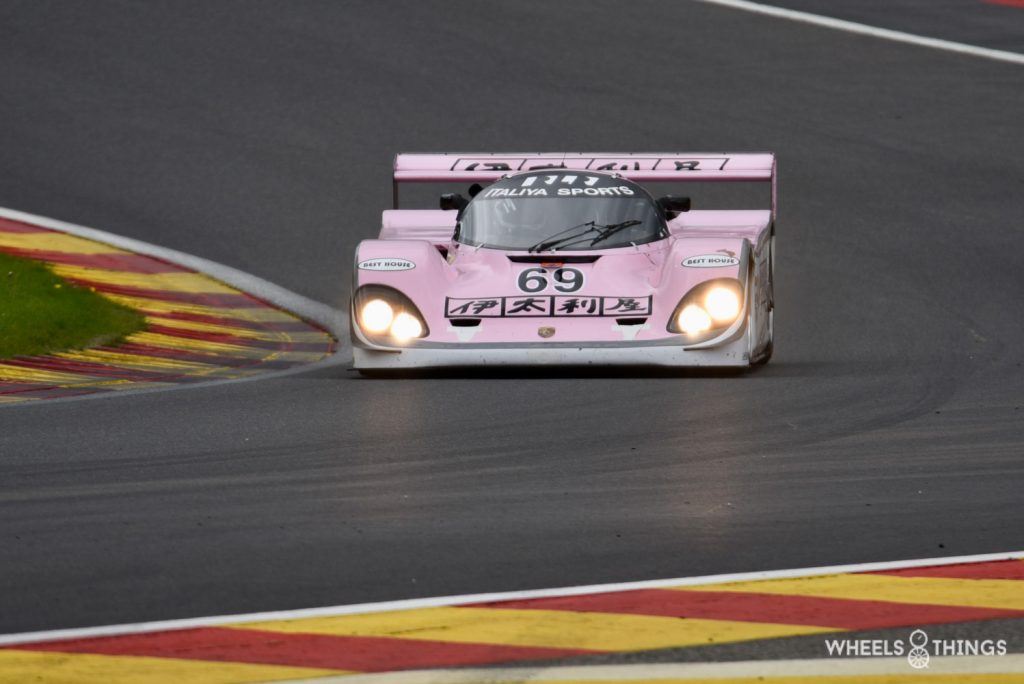
Up front, there is a nice battle between the Sauber Mercedes, the Loyd Porsche and the Silk Cut Jaguars. In the changing conditions, it is Philip Kadoorie’s Loyd Porsche 962 that is still able to pull away and finish the race winningly. Just under half a minute later, it is the Sauber Mercedes C11 of Kriton Lendoudis that comes second just ahead of the Jaguar XJR8 of Richard Meins.
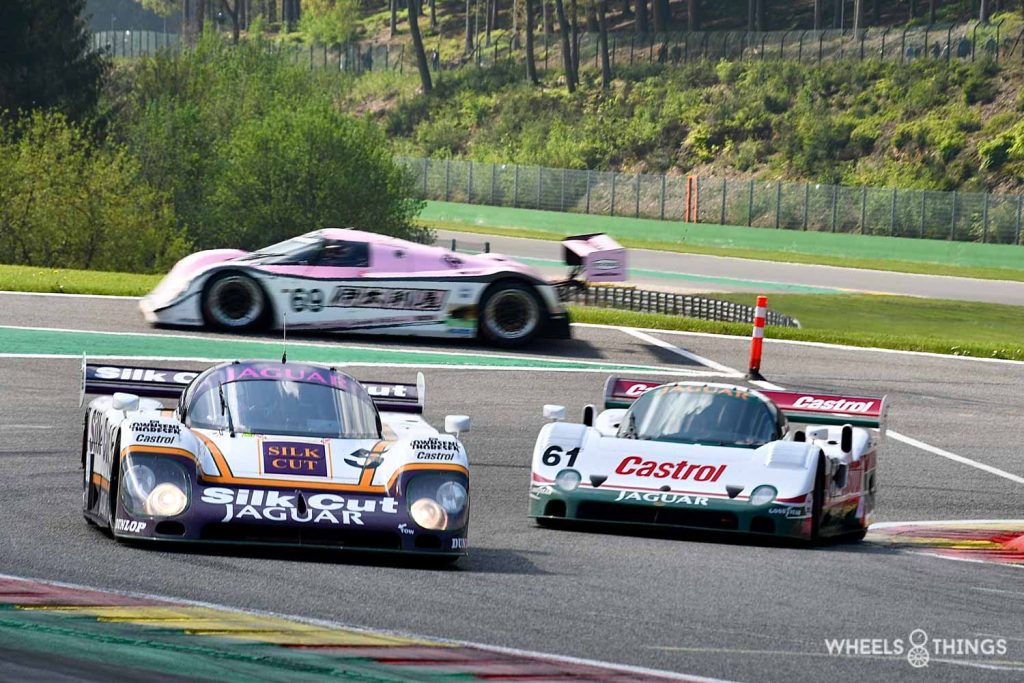
Sunday sees the 20 remaining cars compete in sunny and dry conditions. A totally different setting compared to the Saturday race. The time differences are much smaller this time but a really exciting race it is not.
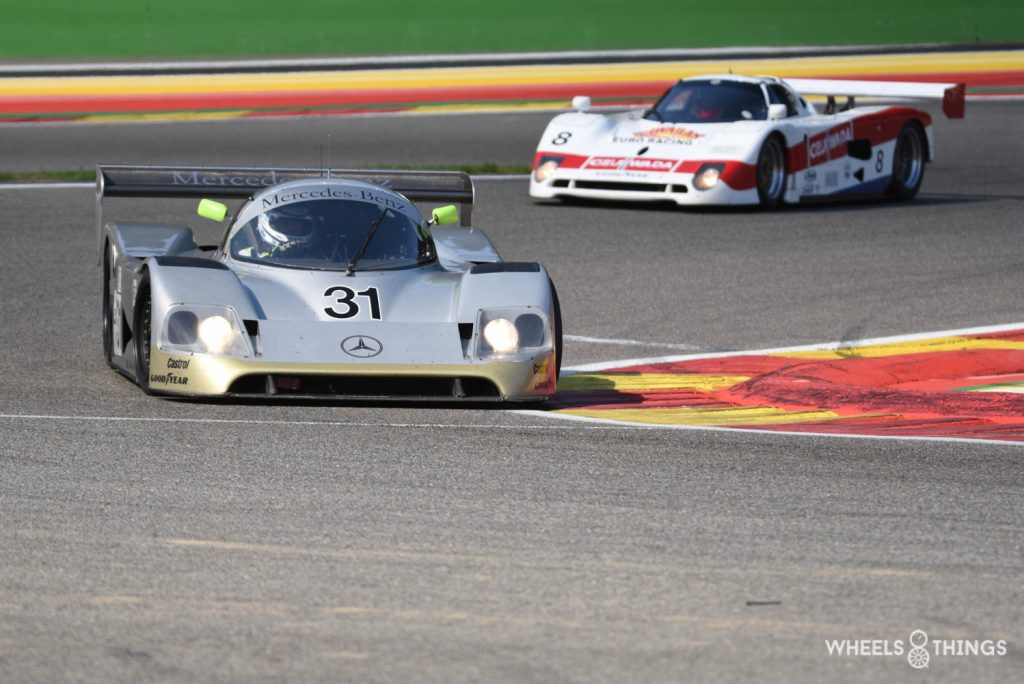
Lendoudis’ Sauber Mercedes C11 is a size too strong for the competition this time, winning by 16 seconds ahead of Hart’s Lola T92. The Blaupunkt Porsche, though the fastest car of the weekend, comes third at 34 seconds. The co-pilot/owner clearly does not have the same qualities as Ralf Kelleners.
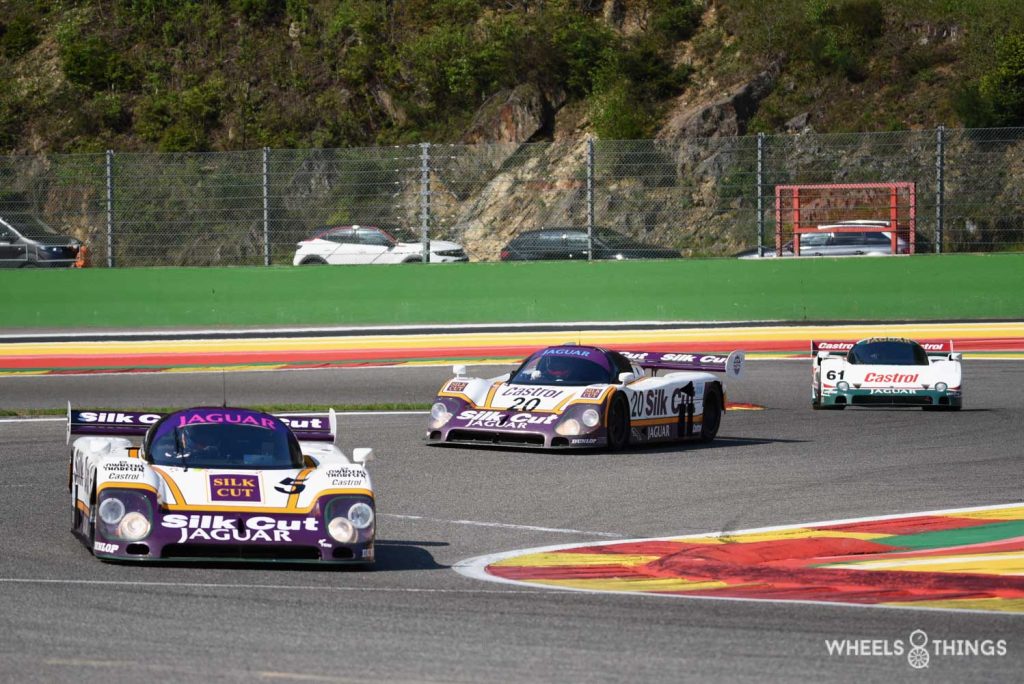
Philippe Scemama could finish fourth with his Leyton House Kremer Porsche just ahead of a whole bunch of TWR Jaguars. The latter drove together for almost the entire race, which was really great to see. Sixteen cars reached the finish, meaning that more than half of the original starting field had disappeared by now. And that is a shame, of course.
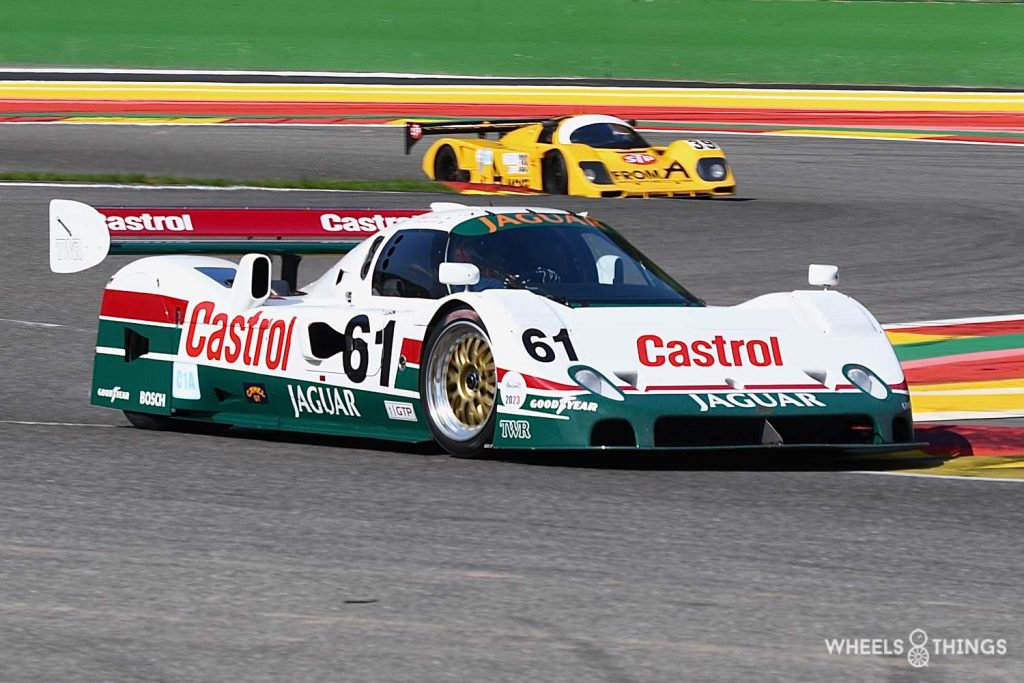
So if you want to see them all you just have to go and watch them on Friday, and this applies to any classic race. And these Group C cars, with their Le Mans history, are well worth it.
Next appointment: Le Mans Classic on 1 July.
